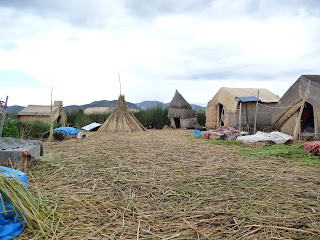You couldn’t walk anywhere without getting hit by a drive-by
water balloon or have a bucket dumped on you from a balcony. On the last days before lent each year
the entire continent of South America erupts into the worlds largest party:
Carnival. In Bolivia (as well as
most of South America) Carnival is far bigger than Christmas or any other
holiday. Bolivia takes Carnival so seriously that when Chile invaded Bolivia in the War of the Pacific in the late 1800s, Bolivia waited until Carnival was over to respond. In Cochabamba the entire
city morphs into the battleground for the biggest water fight I’ve ever
seen.
On
Sunday we had a cook out with my extended host family although it didn’t take
long for the family meal to turn into an all out water fight with buckets of
water and hoses. Everyone participated from the little kids to the great
grandparents! After a while the
water fight died down into conversation and dancing but the occasional water
bucket was dumped down someone’s back.
 |
| My host Family |
 |
| Water Fight |
 |
| Dancing |
 |
| My host mom Lucy with Lauren and I |
On
Monday and Tuesday, however, the whole city got involved. Walking down the street, you had a
better chance of getting soaked than in sea world’s splash zone. Avenida America, the main drag through
the north of the city, became a battleground with people on the sidewalks
waging war against the people in the cars. Families drove down the street drive by water-gunning,
pickup trucks carrying water balloon militias, and even fire trucks with the
fire hose artillery drove down Avenida America and fired on the infantry on the
sidewalk armed with water balloons and water guns. Ladies armored in plastic ponchos sold water balloons to both
sides, frantically filing them up to stay up with demand.
The
best part of the whole ordeal was 1) everyone participated from little kids to
grandparents and everyone in between and 2) everyone was very
good-natured. If you nailed
someone in the back of the head with a water balloon they wouldn’t get mad;
they would only turn around, throw one back, and give you a thumbs up. In one sidewalk skirmish I dropped my
keys in the action and one of my assailants ran over a block to return them.
The
following Saturday, the entire city shut down for the parade. And Bolivia takes parades seriously;
the parade lasted for 24 hours over a distance of over 4 miles. The parade groups were anything but
hastily thrown together; on the contrary the “fraternidads” practice all year
for the Carnival Parades. The
costumes are unbelievably colorful and elaborate garnished with everything from
bells to sequins to giant taco suits.
 |
| Trying on a Giant Taco Suit |















































